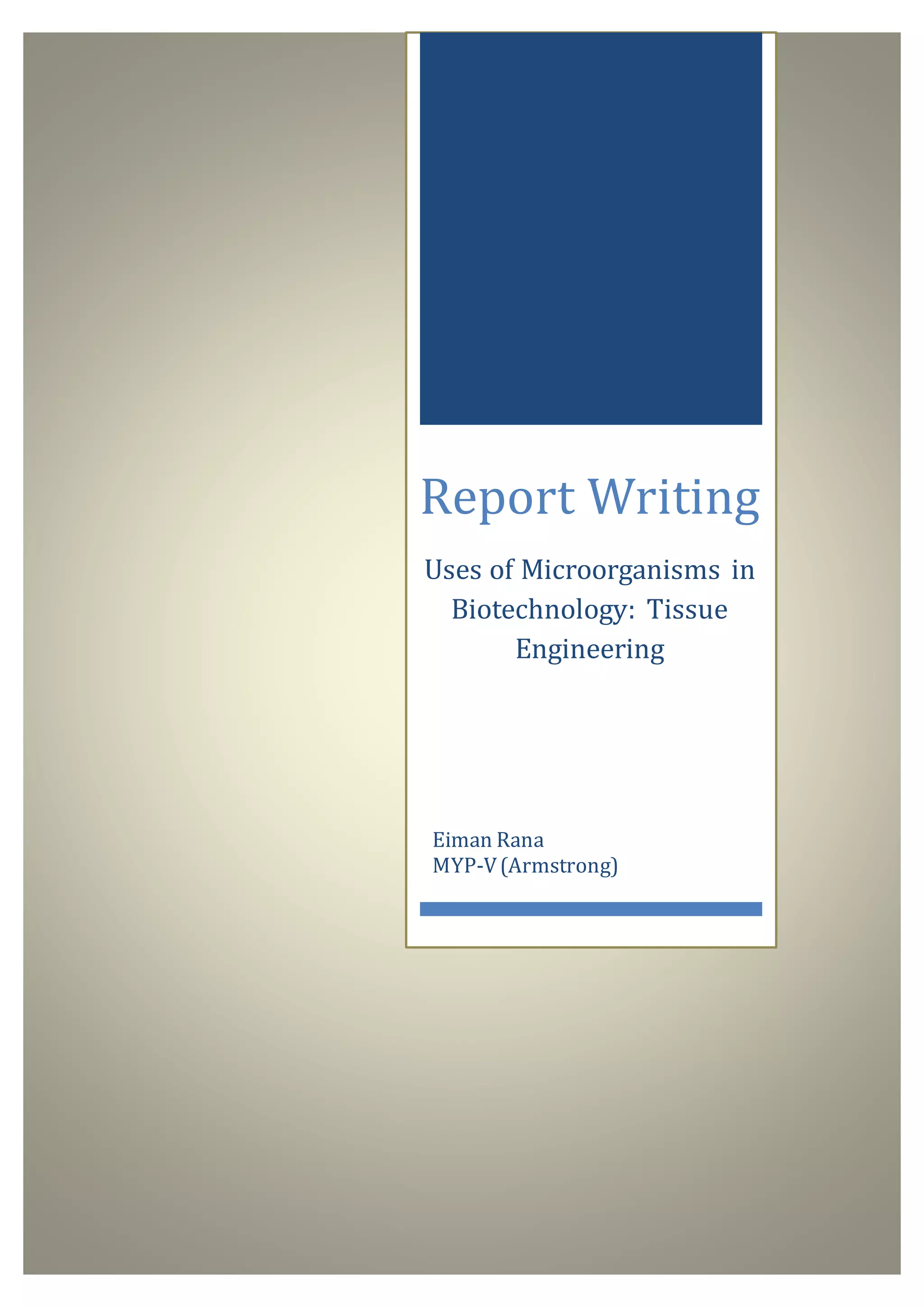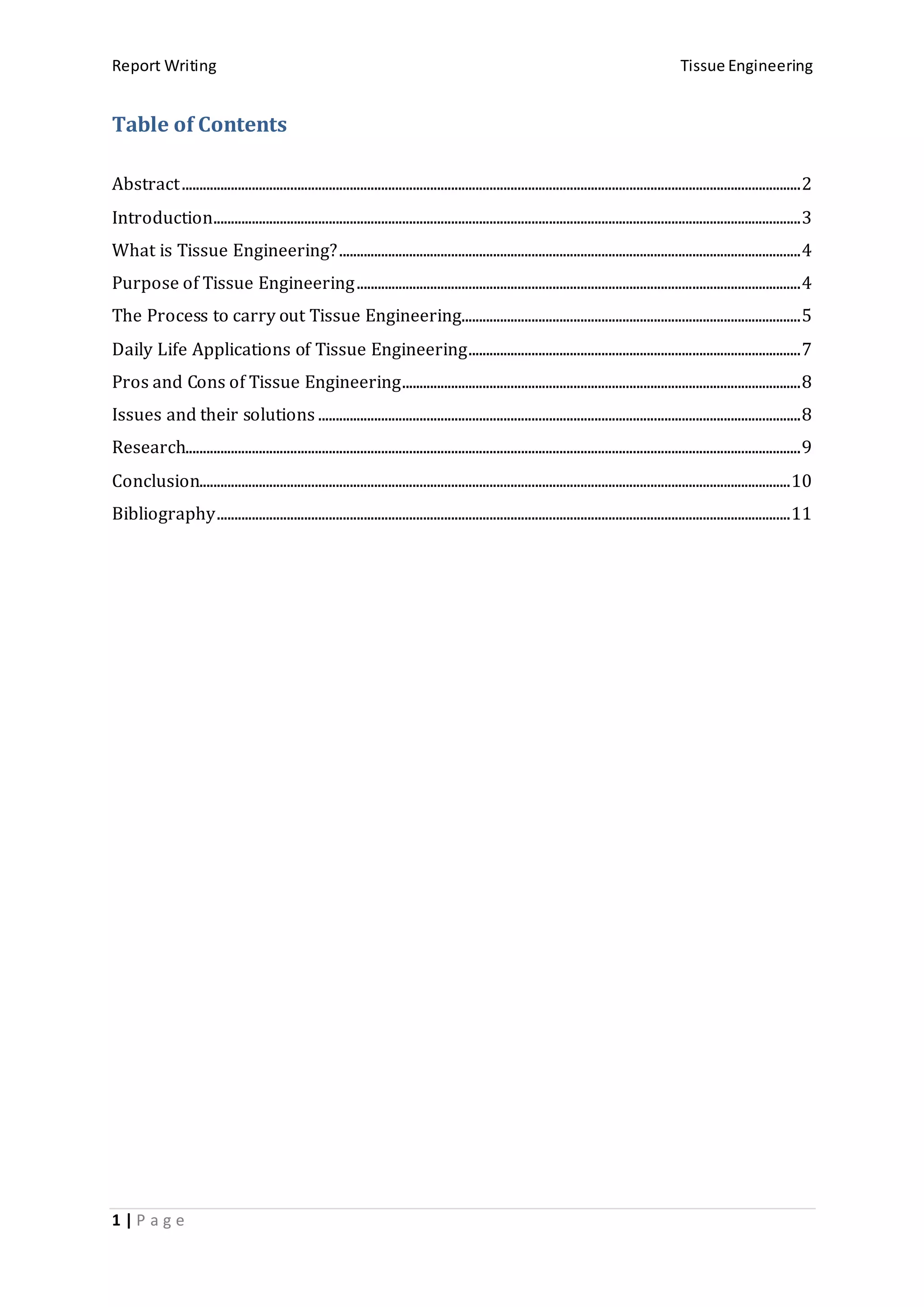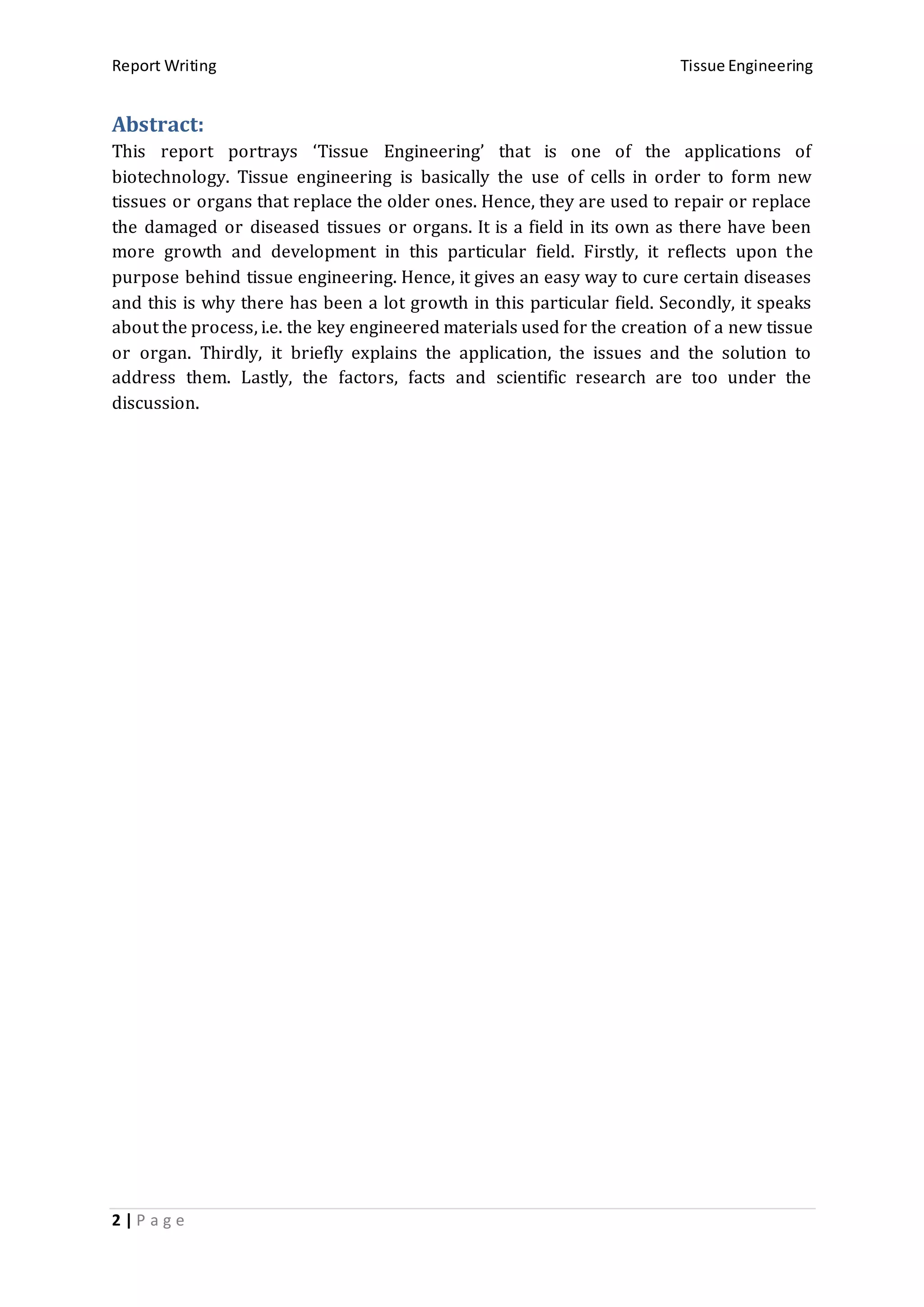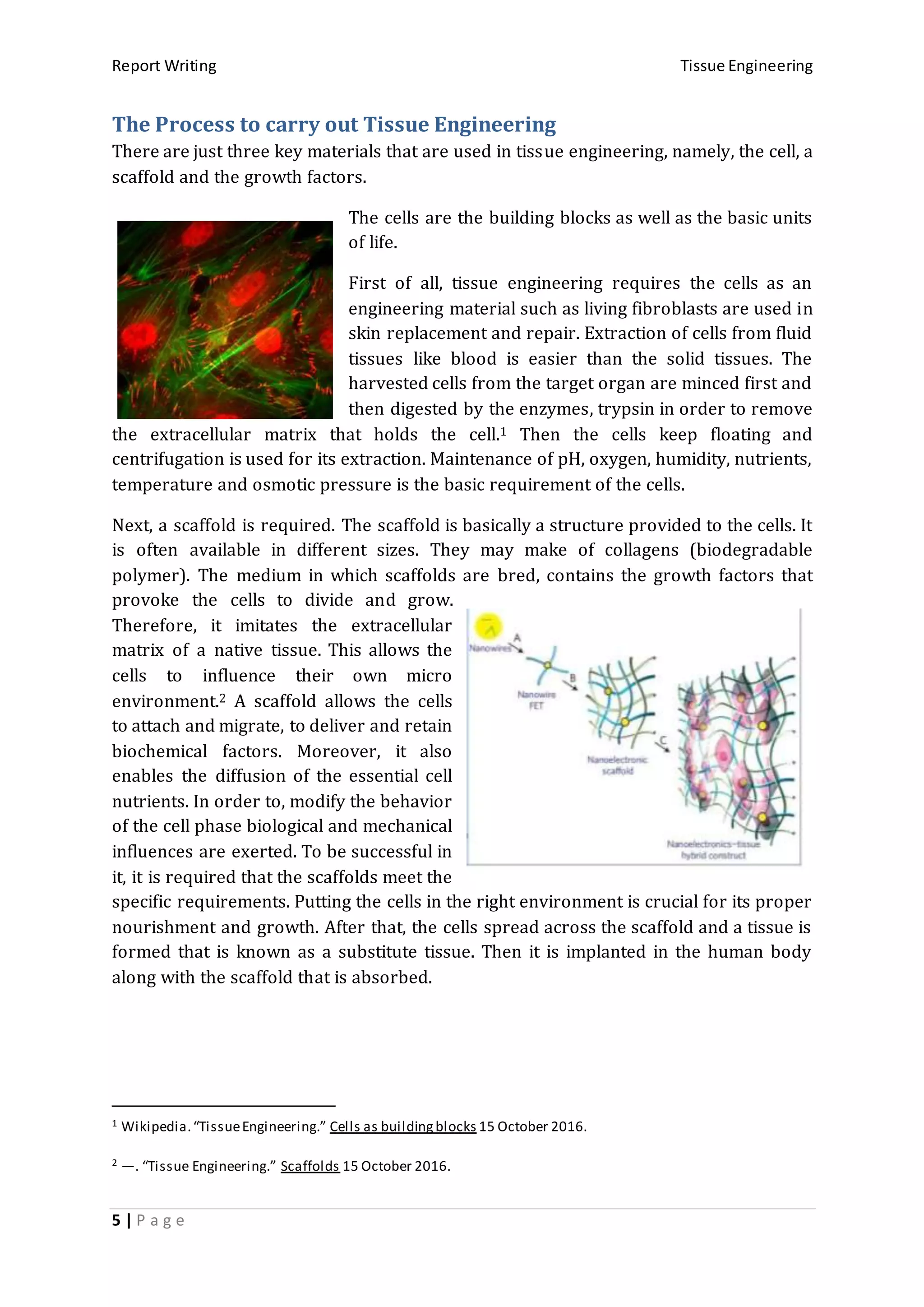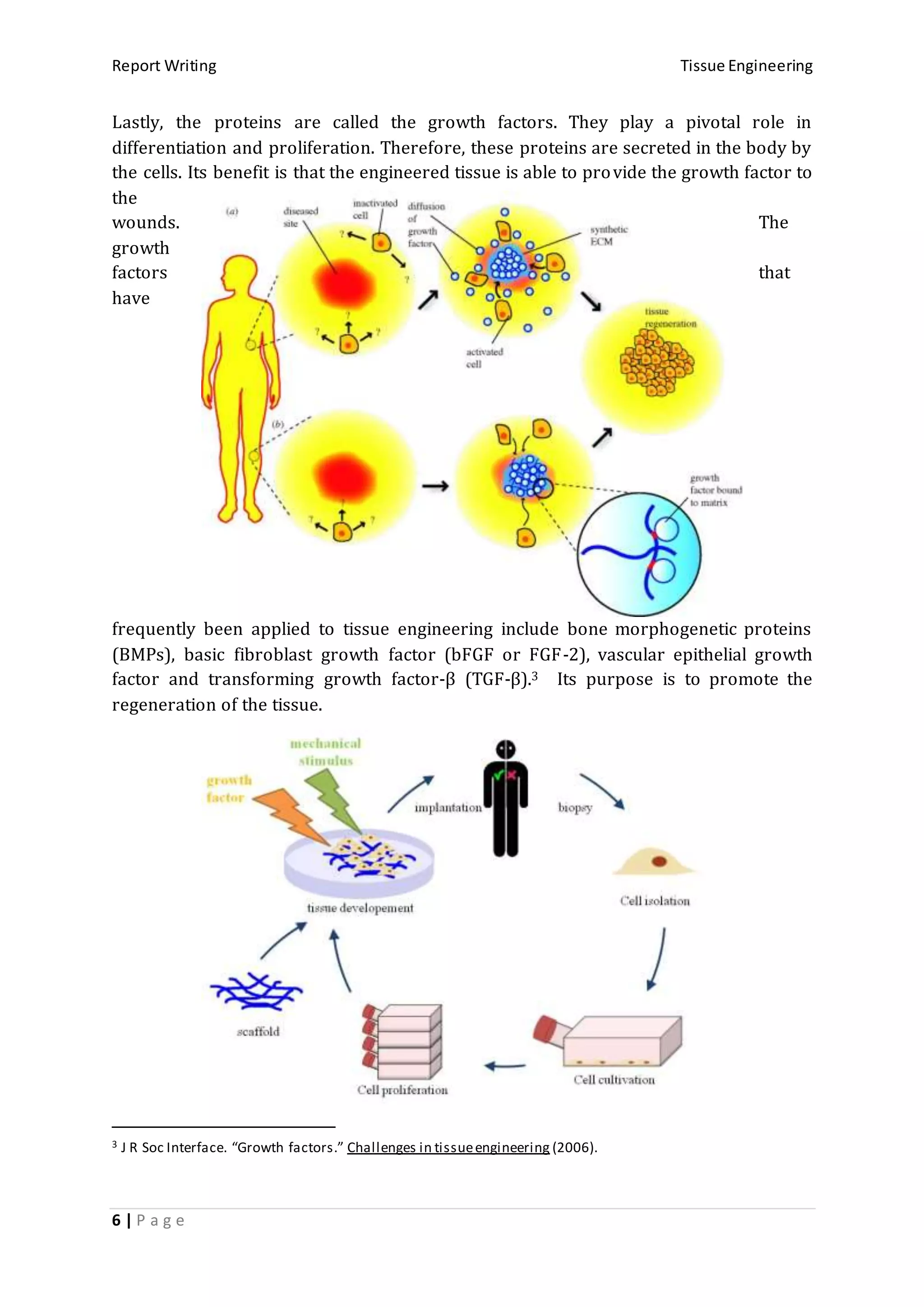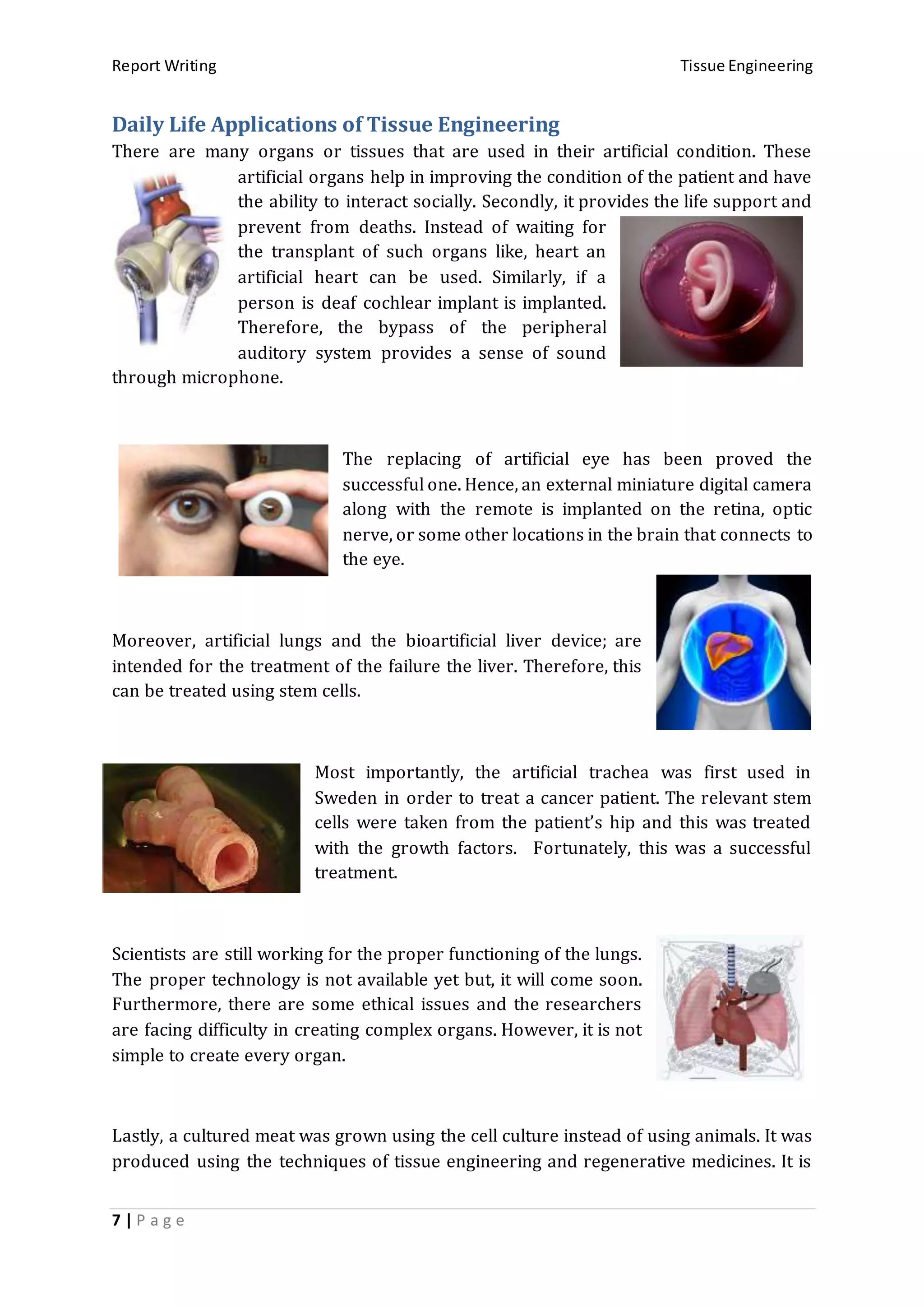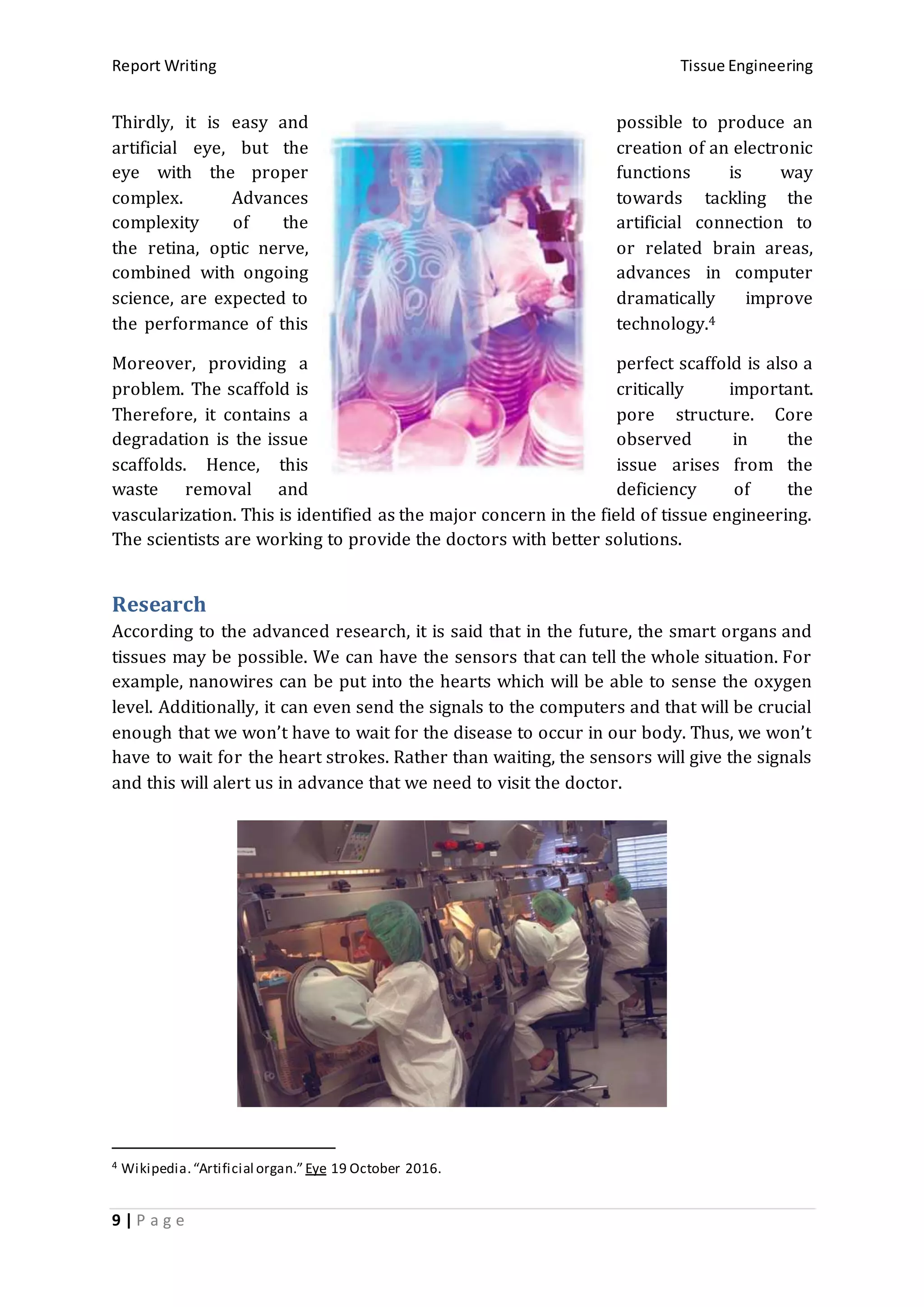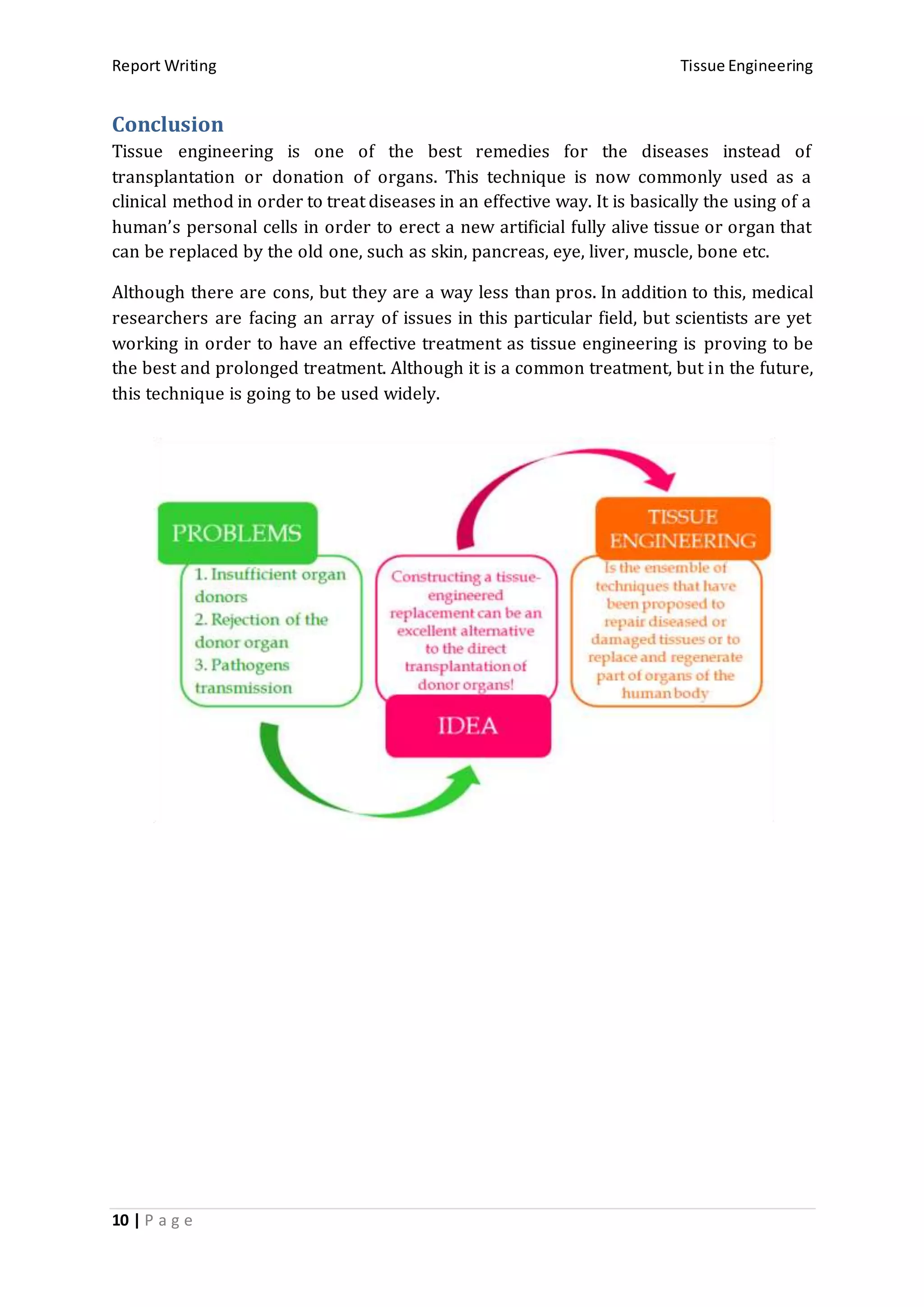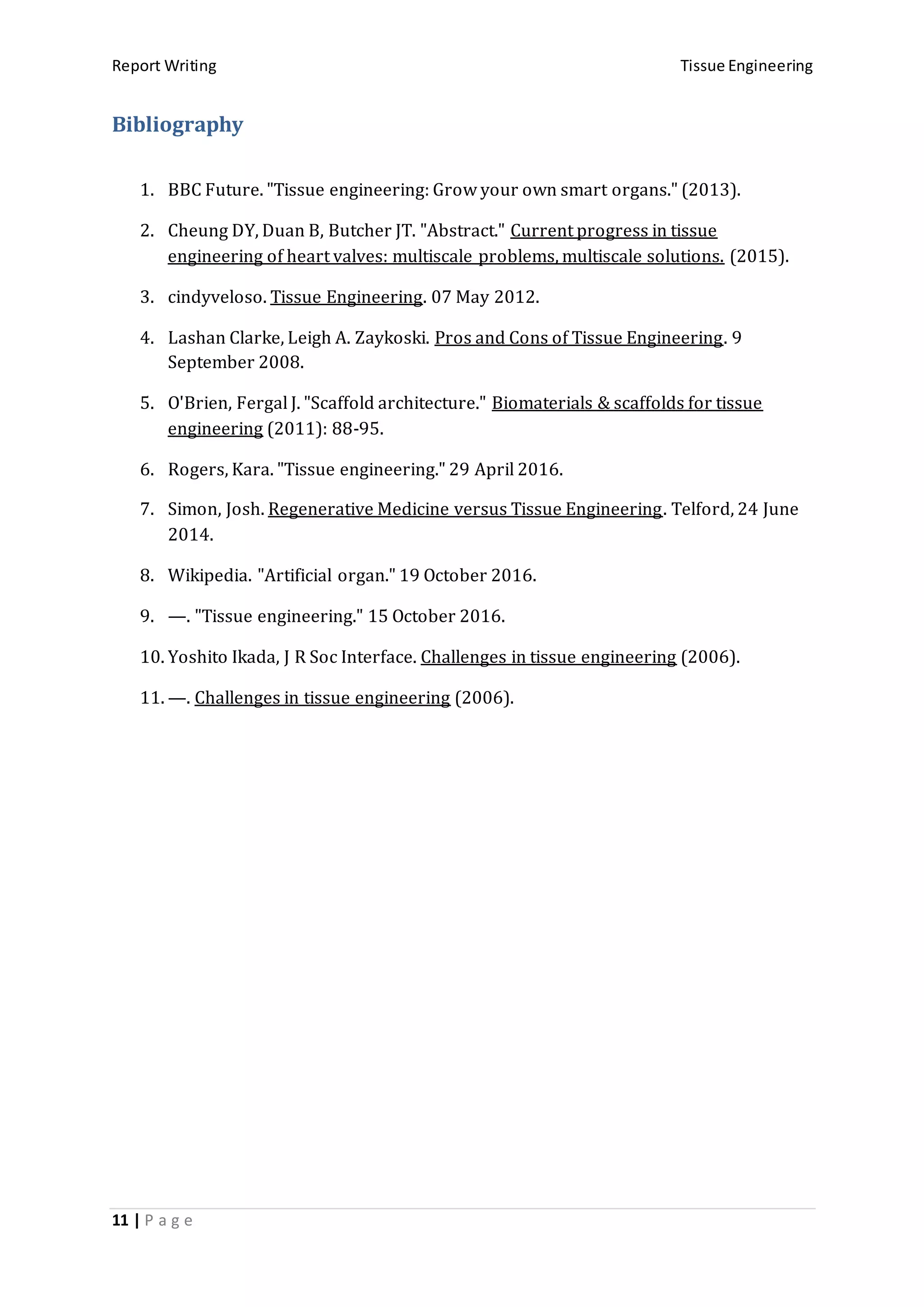Tissue engineering is a field that uses cells to create new tissues and organs to replace damaged or diseased ones. It has three key components - cells, a scaffold for the cells to attach to, and growth factors. Some applications include artificial skin for burn victims, artificial blood vessels, and tissue engineered bladders. While it provides benefits like reducing rejection risks, issues remain around creating complex organs and ensuring scaffolds support cell growth. Researchers are working to address these challenges and further develop the field of tissue engineering.
